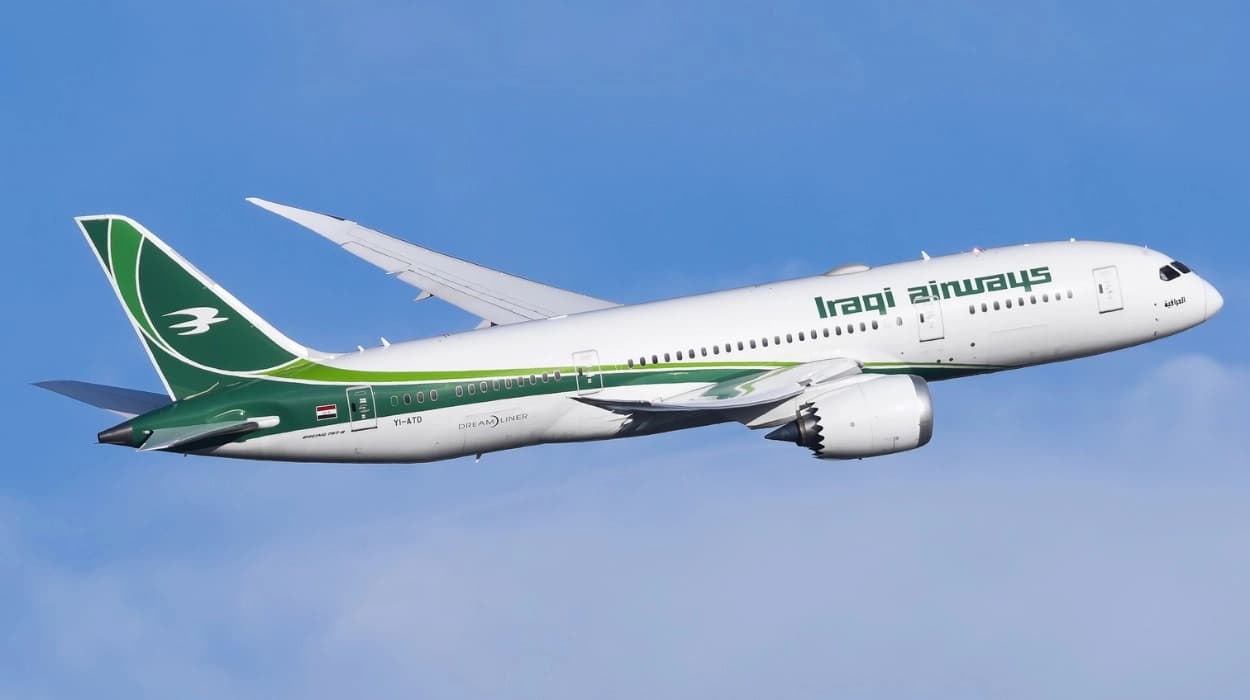Iraq is aggressively expanding its aviation sector with the
opening of three new airports by 2025, plans to grow its national airline fleet
to 53 aircraft by 2027, and intentions to reach more domestic and international
destinations. This strategic move aims to boost the economy, enhance
connectivity, and align the country’s civil aviation infrastructure with
international standards.
Iraq's Ambitious Aviation Expansion Plan
As reported by Nadim Kawach of Aviation Business Group on
September 19, 2025, Iraq has launched a comprehensive strategy to expand its
national air carrier Iraqi Airways to cover new global destinations and serve
revived and newly constructed domestic airports. The Ministry of Transport
focuses on upgrading the airline’s fleet, improving services, hiring foreign
companies to train staff, and aligning airports and airspace services with
international standards through cooperation with the International Civil
Aviation Organization (ICAO).
Maytham Safi, the ministry's information director, stated to
Al-Sabah that the plan prioritises expanding the fleet and opening
international flight destinations, particularly to Arab airports, other
regional countries, and worldwide. This expansion is expected to enhance Iraq’s
commercial relations and attract tourists, furthering economic growth.
Opening Three New Airports by 2025
The Ministry of Transport, as detailed by Maitham Al-Safi to
Shafaq News and BasNews in late 2024 and mid-2025, is preparing to open three
new major airports: Nasiriyah, Mosul, and Karbala International Airports. These
airports will join the operational hubs of Baghdad, Basra, and Najaf to form a
more comprehensive network.
- Mosul
International Airport, rebuilt after damages from the ISIS conflict, is
86% complete and ready for licensed carriers. It is now the country’s
third most significant airport, following Baghdad and Basra.
- Karbala
International Airport is about 75% complete and built by a British
company with French design consultancy. The airport, located southeast of
Karbala between Najaf and Karbala cities, will begin with a capacity of
three million passengers annually, expandable to 20 million.
- Nasiriyah
International Airport, developed by China State Construction Engineering
Corporation, is approximately 71% finished and awaits specialised aviation
equipment to become operational by the end of 2025.
The new airports are integral to Iraq’s Development Road
project, connecting 11 provinces, and aim to facilitate transport, logistics,
and passenger movement nationwide. Collaboration with the International Finance
Corporation (IFC) supports airport renovation and modernisation.
Expanding and Modernising the Aircraft Fleet
Iraq has already begun modernising its fleet with the
acquisition of 13 modern aircraft in early 2025, including six Boeing 737 Max
jets, two Boeing Dreamliners, and five Airbus planes, according to Maitham
Al-Safi speaking to The Insight International. The plan is to have 31 modern
aircraft by 2027, and the cabinet has approved purchasing more Boeing and
Airbus aircraft, targeting a total fleet size of 53 jets by the end of that
year.
This fleet expansion is a critical part of the government's
strategy to elevate service quality, meet rising international and domestic
travel demand, and adhere to global aviation standards.
New Destinations and Route Network
According to Iraqi News, Iraqi Airways plans to launch
operations to four new international destinations in 2025: Riyadh (Saudi Arabia), Sharjah (UAE), Dhaka (Bangladesh), and Indonesia (covering Jakarta and
Bali). These additions aim to strengthen economic and tourism ties with the
Gulf states and South Asia, catering to the Iraqi diaspora and increasing
cultural exchange.
The airline already serves around 60 destinations across the
Middle East, Asia, and Europe, including new routes such as Baghdad-Beijing,
resumed after years of suspension.
Improving Airspace Services and Safety Standards
Iraq is committed to upgrading its airspace services to meet
international regulations. The Ministry of Transport is negotiating with the
International Civil Aviation Organization to rehabilitate airports and
airspace, reflecting efforts to resume flights over European airspace—a region
currently restricting Iraqi airlines due to safety concerns.
Though Iraqi Airways and Fly Baghdad remain on the EU’s
banned list with restrictions since 2015 and November 2023 respectively,
officials report progress. Updates to the legislative and regulatory framework
were presented to the European Union Aviation Safety Agency in April 2025,
though EU officials maintain concerns about the timeline and consistency of
these reforms.
Resumption of International Airline Operations in Iraqi Airspace
Highlighting increased international trust, seven
international airlines have returned to operate in Iraqi airspace, including
German Cargo, Swiss Air, Lufthansa AirX, Qantas, and others, as announced by
Abbas Sabbar Al-Baydhani, Director General of the General Company for Air
Navigation Services of Iraq.
This return demonstrates confidence in the competence of
Iraqi air traffic controllers and ongoing infrastructure upgrades aimed at
strengthening Iraq’s role as a key transit hub between East and West.
Growing Flight Operations and Enhanced Passenger Services
Iraqi Airways has significantly expanded its daily flight
operations to approximately 40 daily flights, connecting Baghdad to global
cities such as Karachi, Amman, Dubai, Istanbul, Beijing, and Cairo, according
to a July 2025 report by IINA News.
In line with Prime Minister Mohammed Shia Al-Sudani and
Transport Minister Razzaq Muhaibis Al-Saadawi’s directives, the airline is
introducing fare discounts for retirees, people with special needs, cancer
patients, and wounded security personnel. It also progresses rapidly toward
obtaining the IOSA (IATA Operational Safety Audit) certification to improve
safety and operational standards.
Iraq’s multifaceted strategy to expand and modernise its aviation sector encompasses new airport constructions, fleet upgrades, route expansions, and improving safety and airspace management. These ambitious efforts illustrate the country's push to transform its aviation infrastructure, attract tourism and business, and strengthen its position as a regional and international air travel hub—all critical to its economic recovery and growth.
